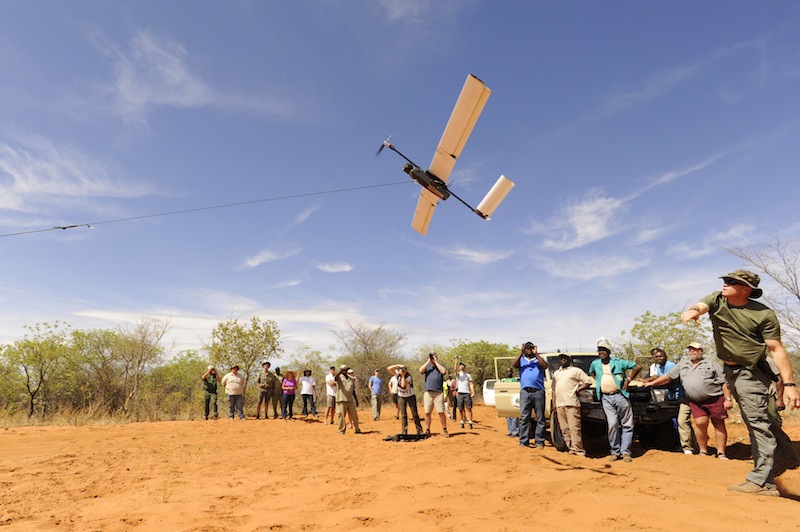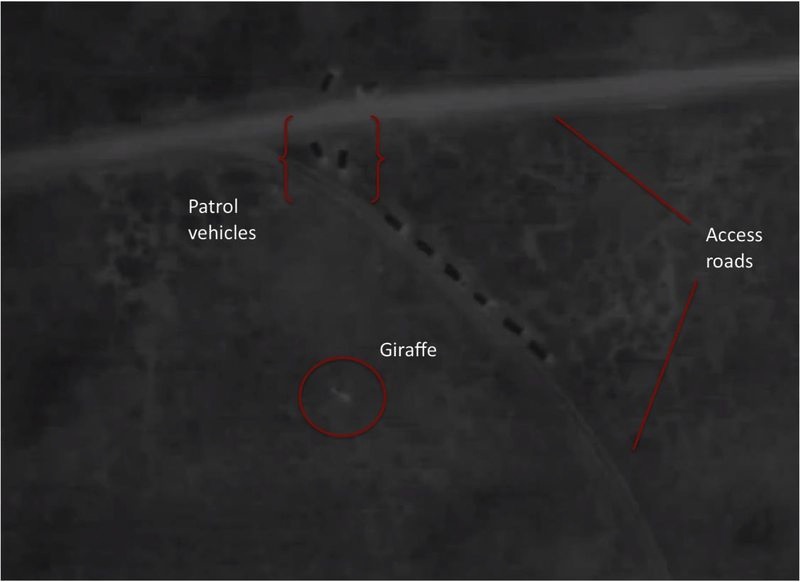Drones Enter the Battle Against Elephant, Rhino Poachers

To give park rangers in Africa an upper hand in the fight against poachers, conservationists are bringing drones to the places where vulnerable elephants and rhinoceroses roam.
Google gave the World Wildlife Fund (WWF) a $5 million Global Impact Award about a year ago to look for new ways to detect and deterwildlife crime.
Now the conservation group and its partners in Namibia are just about ready to implement bungee-launched drones and a host of other poacher-tracking technologies in some of the country's national parks, WWF officials say. [See Photos of the Anti-Poaching Drones]
Leveling the playing field
The illegal wildlife trade, which includes lucrative markets for elephant ivory and rhino horns, is estimated to be worth up to $10 billion. With such high profits at stake, poaching rings have adopted technologies like night vision goggles, silenced weapons and even helicopters to find and kill some of the world's most threatened mammals.
This landscape is "not a level playing field" for less-equipped rangers in Namibia, some of whom are charged with managing vast protected areas, like the New Jersey-sized Etosha National Park, said Crawford Allan, who is leading the WWF's Wildlife Crime Technology Project.
One of the most difficult tasks rangers face is catching poachers at night. But Allan hopes a small fleet of Colorado-made Falcon UAVs (unmanned aerial vehicles) can help address that challenge. The drones, which are outfitted with night vision and thermal sensors, could help rangers spot poachers and monitor both animals and the rest of their own patrol team in real-time.
Get the world’s most fascinating discoveries delivered straight to your inbox.
Allan was in Namibia this past November when the WWF was working with a group of experts and the Namibian Ministry of Environment and Tourism to test out the Falcon UAVs in two of the country's national parks.
"We were standing just 50 feet away from a giraffe at night and we didn't know," Allan told Live Science. But in the video footage beamed down from one of the Falcon drones overhead, the team could see the white glow of the animal, he added.
"That's what it's like for rangers; they could be literally feet away from poachers and just not know they're there," Allan said.
A powerful payload
Each drone costs about $20,000 including its payload of cameras and other equipment, Allan said. The vehicles take just a couple of minutes to put together and launch for an autonomous flight. The UAVs are battery-powered, which means they're silent, and they can fly for about 90 minutes over a range of about 12 miles (19 kilometers) before making a parachute landing, Allan said.
The drones will also have a satellite Internet connection, meaning a live video stream from the UAV could be accessed from a computer or even a tablet anywhere in the world. This feature might even allow off-site experts to offer immediate assistance remotely, Allan said.
Beyond drones, the WWF is working with Namibian officials to bring a whole suite of anti-poaching technologies to the nation's parks, including electronic animal tracking devices and specialized ground-based sensors.
At the heart of these high-tech efforts are elephants and rhinoceroses, huge land mammals killed largely to feed a demand for traditional Asian medicines and luxury products.
It's been estimated that 96 elephants are killed each day for their ivory in Africa, contributing to a 76 percent decline in elephant populations since 2002, according to the Wildlife Conservation Society (WCS). And rhinos are in trouble, too. Though Namibia hasn't publically released information about the number of rhinos killed within its borders, its neighbor South Africa recently revealed that a record 1,004 rhinos were killed last year for their horns, a coveted ingredient in (scientifically unsupported) Asian panaceas.
Follow Megan Gannon on Twitter and Google+. Follow us @livescience, Facebook & Google+. Original article on Live Science.




